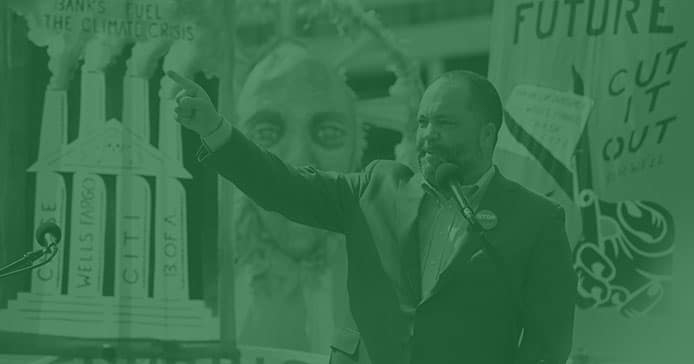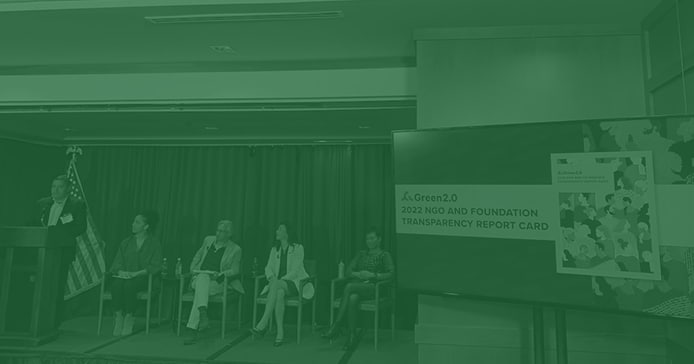Press Mention
The Sierra Club hired its first Black CEO. Turmoil over racial equity followed.
Sierra Club Executive Director Ben Jealous speaks during a protest of big banks financing fossil fuels on When Ben Jealous became the first person of color to lead the Sierra Club, the prominent civil rights leader promised to create more inclusive working conditions at the nation’s oldest environmental group.
Read MoreOpinion: Native Americans need voice in solving water issues
By Andres Jimenez, Executive Director of Green 2.0, and Michael Roberts, Executive Director of First Nations Development Institute. Read at The Denver Post. The Supreme Court’s recent 5-to-4 decision in Arizona v. Navajo Nation continues a legacy of restricted water access for Indigenous peoples and limits their access to abundant drinking water, clean drinking water, and adequately treated residential…
Read MoreOpinion: Affirmative Action decision puts pressure on environmental equity movement
The U.S. Supreme Court’s decision last week regarding affirmative action threatens almost 40 years of progress at leveling the field in college admissions. The decision is a huge step backward for prospective students and not only threatens college admissions but may very well impact the current face of the workforce that affirmative action helped change.
Read MoreWhy it matters that the diversity report card for environmental organizations doesn’t track gender
A new report that details diversity in environmental organizations found a 3.5 percent increase in staff of color among 68 participating NGOs this year, with a total of 36.5 percent of staff identifying as being a person of color. It also found that representation decreases in more senior levels, with Black, Latinx and Asian-American employees severely underrepresented in executive positions.
Read MoreGreen movement more diverse but people of color still underrepresented
While diversity among staff at U.S.-based environmental NGOs continues to increase, demographic data remain incomplete, especially among foundations, a report from Green 2.0 finds.
Read MoreAnnual Report on Diversity in Environmental Sector Shows Incremental Progress
Black representation in the U.S. environmental sector has increased steadily in recent years but still falls short of truly reflecting the diversity of the American population, a new report released Tuesday by independent nonprofit Green 2.0 found. Among the 68 nongovernmental organizations (NGOs) and 20 foundations that participated, every single entity had committed financial resources to diversity, equity and inclusion efforts in 2022.
Read MoreDiversity progress slows at environmental groups, survey finds
nvironmental groups have modestly increased the number of people of color among full-time staff over the past six years, but White people still account for the vast majority of employees, especially among senior management and top executive roles, according to an annual survey released Tuesday.
Read MorePeople of Color (Still) Underrepresented in Green Groups
Environmental groups are more racially diverse than they were five years ago, but they are still whiter than the national population, and far whiter than the communities harmed most by pollution and the impacts of climate change, the latest Green 2.0 report finds. Of full-time staff at environmental organizations, 36.5% identified people of color. Of senior staff, 34% identified as people of color, and 31% of groups were led by a person of color.
Read MoreMore Green Funders Than Ever Shared Diversity Data in 2022, but Most Still Avoiding the Sunlight
You can count 2022 as a step toward the sunlight for environmental philanthropy’s transparency on diversity, yet most of the field still prefers the shadows.
Read MoreWhy Environmental Organizations Need Diverse Leadership?
People of color and the communities in which they reside are disproportionately affected by hurricanes, flooding, drought, and wildfires due to climate change. Why? Because the long-term impact of natural disasters and climate change tends to fall on people of color, who are often located in racially and economically segregated communities.
Read More








